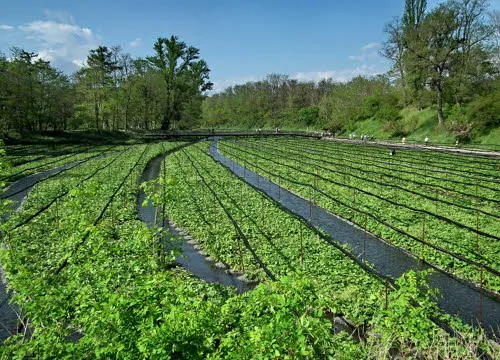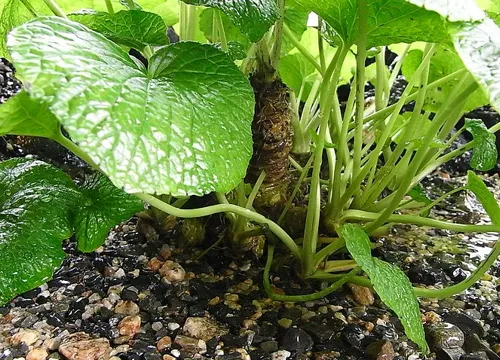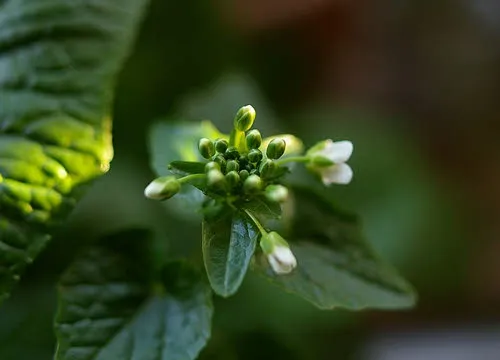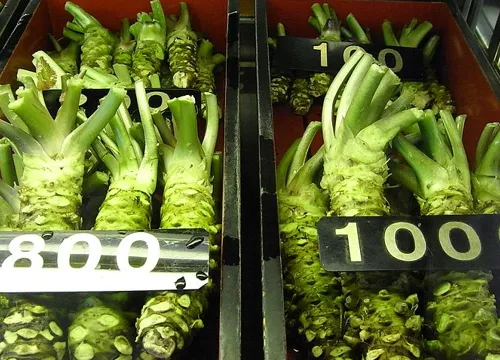Published:
Author: Antonio Maria Guerra
Wasabi
HISTORY, INFO, PLACES, INTERESTING FACTS
Wasabi is among the symbols of Japanese gastronomy: it’s a soft, green paste, which can boast very ancient origins, often used to accompany sushi. This condiment stands out for its particular spiciness. Let’s find out its history, how it’s made, and many unexpected curiosities. Enjoy the reading!

What is Wasabi?
The name ‘wasabi’ indicates both the famous green Japanese condiment, often used to accompany sushi, and the plant (belonging to the ‘Brassicaceae’ family) with which this condiment is prepared.
The specialty comes in the form of a soft paste, generally served in a small bowl or alongside the food.
Where is Wasabi from?
The wasabi plant, used to prepare the famous condiment, since ancient times grows naturally in the Japanese mountainous areas
Read more
along the streams where cold and uncontaminated water flows. Its cultivation began during the ‘Edo’ period (1603 / 1868), mainly in the Shizuoka region (Izu peninsula). Nowadays the most suitable places are the prefectures of Nagano, Iwate and Shimane.

The history of Wasabi.
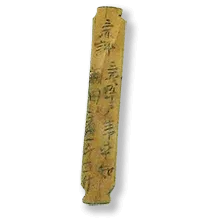 The first written references to wasabi date back to 550 AD., at the beginning of the ‘Asuka’ period (538 / 710). They can be found in the ‘mokkan’: rectangular wooden tablets rediscovered in many archaeological sites around Japan. These mokkans are a sort of ‘post-it’ ante litteram, containing a bit of everything, from memos to expense reports and even short poems.
The first written references to wasabi date back to 550 AD., at the beginning of the ‘Asuka’ period (538 / 710). They can be found in the ‘mokkan’: rectangular wooden tablets rediscovered in many archaeological sites around Japan. These mokkans are a sort of ‘post-it’ ante litteram, containing a bit of everything, from memos to expense reports and even short poems.
Other references of some importance to the plant are in the ‘Honzowamyo’ (*1), a medical encyclopedia dating back to 923, explaining its healing qualities, and in the ‘Engishiki’, the oldest collection of Japanese laws and customs, which illustrates how wasabi, given its value, could be used even to pay taxes.
Read more
 This can be explained remembering that, at the time, the vegetable was not cultivated but only collected along the mountain streams where it grew in the wild: for this reason, it was rare and precious.
This can be explained remembering that, at the time, the vegetable was not cultivated but only collected along the mountain streams where it grew in the wild: for this reason, it was rare and precious.
To witness the birth of plantations, it was necessary to wait for the beginning of the ‘Edo’ period (1603/1868): in this regard, it should be remembered that the legendary Tokugawa Ieyasu (1543/1616), first shogun and founder of the Tokugawa Shogunate, was so much in love with Wasabi (*2) to prescribe by law that it could be planted only in the Shizuoka region.
The use of wasabi to accompany sushi dates back to the end of the Edo period. Over the years, its consumption grew progressively, reaching the commercial boom in the eighties of the twentieth century, when Japanese cuisine became all the rage in the Western world.
Notes:
*1: ‘Honzowamyo’ (本草和名) is a medical encyclopedia, compiled between 901 AD and 923 AD (during the ‘Heian’ period) by Sukehito Fukane, court physician to Emperor Daigo;
*2: Probably because he recognized its remarkable medicinal qualities, or perhaps because its leaves reminded him of that of the ‘Hollyhock’, part of the family coat of arms;


Is Wasabi horseradish?
Although horseradish is widely used to produce a great part of ‘commercial’ wasabi sauce (or, rather, its substitute), it’s NOT wasabi. However, it’s important to remember that both plants belong to the same botanical family: the ‘Brassicaceae’ (also known as ‘Crucifers’).

Wasabi: the plant.
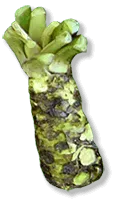 Wasabi (‘Eutrema Japonicum’), the plant used to make the famous Japanese condiment, belongs to the ‘Brassicaceae’ (or ‘Crociferous’) family, the same as horseradish, with which it is related. To develop at its best, it requires very particular conditions, above all a cold and humid climate.
Wasabi (‘Eutrema Japonicum’), the plant used to make the famous Japanese condiment, belongs to the ‘Brassicaceae’ (or ‘Crociferous’) family, the same as horseradish, with which it is related. To develop at its best, it requires very particular conditions, above all a cold and humid climate.
Read more
particular environmental characteristics which, coincidentally, can be found along Japanese mountain streams, where the vegetable grows in the wild. Such stringent needs have always made its cultivation particularly difficult. If we also consider factors such as the slow maturation of the stem (more than three years), its poor resistance to diseases, and its need for manual processing, we understand why wasabi is so expensive. Finally, it should be noted that there are several varieties (‘cultivars’) of this botanical species and that, currently, the most marketed are the ‘Daruma’ (aromatic and intense green) and the ‘Mazuma’ (spicy and light green).
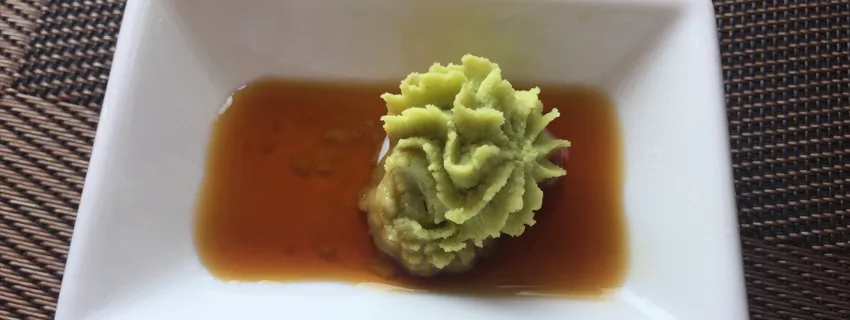
Wasabi: the sauce.
More than a ‘proper’ sauce, wasabi is a pasty cream, prepared by grating the homonymous plant. Thanks to its aroma and particular spiciness, it has become one of the most typical ingredients of Japanese cuisine, used, among other things, to accompany sushi and sashimi. In this case, wasabi is added to soy sauce, creating a mix in which the raw fish is dipped.


Is Wasabi hot?
Wasabi is quite hot, but its spiciness differs from that of chili peppers. The latter contains, in fact, capsaicin (*1), a substance that stimulates the receptors of the mouth, the Japanese specialty contains allyl isothiocyanate, which affects those of the nose, often causing lacrimation: an effect that explains its nickname ‘namida’ (‘tears’ in Japanese).
Read more
It should be added that while the ‘fire’ used by chili peppers can burn for several minutes, that of wasabi generally lasts just a handful of seconds.
Note:
*1: The ‘Scoville’ scale measures the spiciness of peppers according to their content of capsaicin. Wasabi, being free of capsaicin, is excluded from this ranking.

How is Wasabi made?
Original wasabi is prepared by grating the ‘rhizome’ (i.e. the underground stem) of the plant from which the specialty takes its name. According to tradition, an ‘oroshigane’ should be used: it’s a particular type of grater, made of shark leather, for this reason particularly abrasive. The procedure should be carried out just before the creamy sauce is served, as its organoleptic characteristics begin to degrade after just a few minutes.
Traditional Japanese music.
Traditional Japanese music to accompany the reading of this article:

Wasabi and Sushi.
According to tradition, when making sushi wasabi should be placed between the rice and the fish. Outside Japan, it’s generally added to soy sauce: in this case, sushi should be gently dipped in the mixture.
The same mixture is used to accompany ‘sashimi’.

Nutritional properties.
Wasabi contains vitamin C and, in smaller quantities, vitamins A and B. Iron, zinc, calcium and potassium are also present. Its antibacterial and antiseptic properties are reknown. Many Japanese believe it has aphrodisiac effects. It has recently been discovered that it can prevent some types of cancer.

The movie.
Perhaps not everyone knows that ‘Wasabi’ is the name of one of the most famous films by the French director Luc Besson (2001).
Read more
Very famous is the scene in which the protagonist, played by Jean Reno, manages to ingest a large portion of the Japanese specialty without any apparent reaction: this pushes his guest to imitate him, with the obvious, tragicomic effects.
Copyright information.
The images displayed in this page belong to WebFoodCulture, with the exception of:
Pubblic Domain Images:
- Wind God Fujin (Wikipedia Link) {PD-Art} {PD-US}
- Wasabi (Wikipedia Link)
- Tokugawa Ieyasu, XVII Sec., Kanō Tan’yū (Wikipedia Link) {PD-Art} {PD-US}
Creative Commons Images:
- Wild Radish, image by Joanna Voulgaraki (Wikipedia Link)
- Daio Wasabi Farm ,Azumino, Nagano, image by 663highland (Wikipedia Link)
- ‘Mokkan’ tablet, image by さぱしあ (Wikipedia Link)
- Wasabi plantation, image by lienyuan lee (Wikipedia Link)
- Wasabi plant, image by 江戸村のとくぞう (Wikipedia Link)
- Wasabi flower, image by Nagarazoku (Wikipedia Link)
- Wasabi, image by 江戸村のとくぞう (Wikipedia Link)
- Wasabi and oroshigane (Wikipedia Link)

